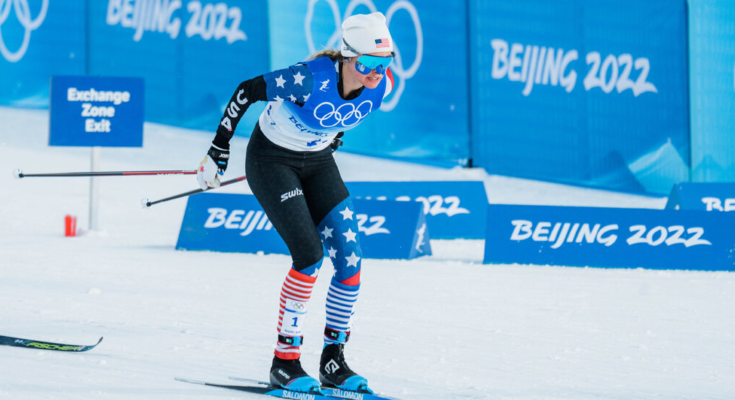Eileen Gu made history this week when she became the first freestyle skier to win three medals at a single Olympics, capping a stunning performance in Beijing with a gold in the women’s halfpipe on Thursday.
Gu, an 18-year-old Californian who is competing for China, won her first gold of the Games in the inaugural women’s freestyle skiing big air competition, introduced as part of the International Olympic Committee’s efforts to achieve gender parity at the Games. She also won a silver medal in the slopestyle event this week.
The Beijing Games, which wrap up on Sunday, have been described by the I.O.C. as the most “gender-balanced” Winter Games in history, with women accounting for a record 45 percent of the athletes. That’s up from 41 percent at the 2018 Pyeongchang Games — and 4.3 percent at the 1924 Games in Chamonix, France.
The women’s big air event is one of seven competitions that were added to the Olympic program in Beijing. The addition of the mixed team format — in which men and women compete together — to events in short-track speedskating, ski jumping, aerials and snowboard cross is another part of the I.O.C.’s effort to promote gender equality. The inaugural monobob competition was contested solely by women.
Nicole M. LaVoi, the director of the Tucker Center for Research on Girls and Women in Sport at the University of Minnesota, said that in some ways, efforts to achieve gender parity were headed in the right direction.
“Being able to showcase their talent alongside their male peers is a good move,” LaVoi said of female Olympians.
But the number of women competing in the Games is not the only metric by which equality can be measured, and women are still “competing in a system where they do not feel safe, valued or supported,” she said.
The founder of the modern Olympics, Baron Pierre de Coubertin, barred women from competing in the inaugural 1896 Games. In 1900, 22 women were welcomed in five events — croquet among them — while 975 men competed in everything from track and field to rowing.
The number of women participating in the Olympics has gradually crept up since then, but it was not until 2014 that the I.O.C.’s planning agenda included a recommendation that the committee work “to achieve 50 percent female participation in the Olympic Games.”
While the gap is closing, there are still areas where women have little or no access by comparison with men.
Nordic combined, a sport fusing cross-country skiing and ski jumping that has been on the Olympic docket since 1924, is the only winter sport in which women do not participate. (Women are expected to be able to compete soon, perhaps by 2026.)
Even if a sport is available to both men and women, there are often far fewer competition spots allocated to women than to men. This week, the bobsledder and skeleton athlete Simidele Adeagbo, who in 2018 became the first Black woman to compete in skeleton at the Olympics, sent a letter to the governing body for her sports claiming that gender discrimination had blocked her from competing in this year’s Games. In the letter, which was reported earlier by Reuters, lawyers for Adeagbo said she had been excluded from the monobob event in Beijing because of “an insidious and willful gender disparity in the number of sled spots made available for men and women.”
Men hold the advantage in terms of slots: There are 28 sled spots reserved for men in the four-man bobsled event and 30 spots reserved for the two-man competition. Women are allotted 20 spots in the monobob and 20 in the two-woman bobsled.
There are disparities in other sports at the Winter Olympics. Cross-country skiing, Alpine skiing, biathlon and long-track speedskating all have men’s events that cover greater distances than the women’s events do. If men are competing in events that are seen as “bigger” than women’s, that overshadows women’s events, which may be “seen as secondary or less than,” LaVoi said.
Ski jumping, which added a women’s division in 2014, also comes up short. Though a mixed team event was added to the Olympic agenda in Beijing, giving women another opportunity to win medals, men still have more chances to make the podium. Anna Hoffman of the United States, who made her Olympic debut in Beijing, posted a video on TikTok highlighting the fact that the ski jumping event featuring the large hill, which stands at about 450 feet, excludes women at the Olympics, even though women can now compete on the large hills at other international events, including the World Championships.
Hoffman said that the competition on the large hill in the women’s game was exceptional, yet despite the achievements of recent years, “we are still being told to be patient and wait” when it comes to Olympic programming.
“We shouldn’t have to be fighting for this,” she said, adding later that the issue wasn’t to ensure equal outcomes for men and women in various sports.
“It is about opportunity, and that is what we are asking for,” Hoffman said.


